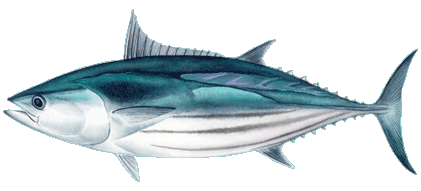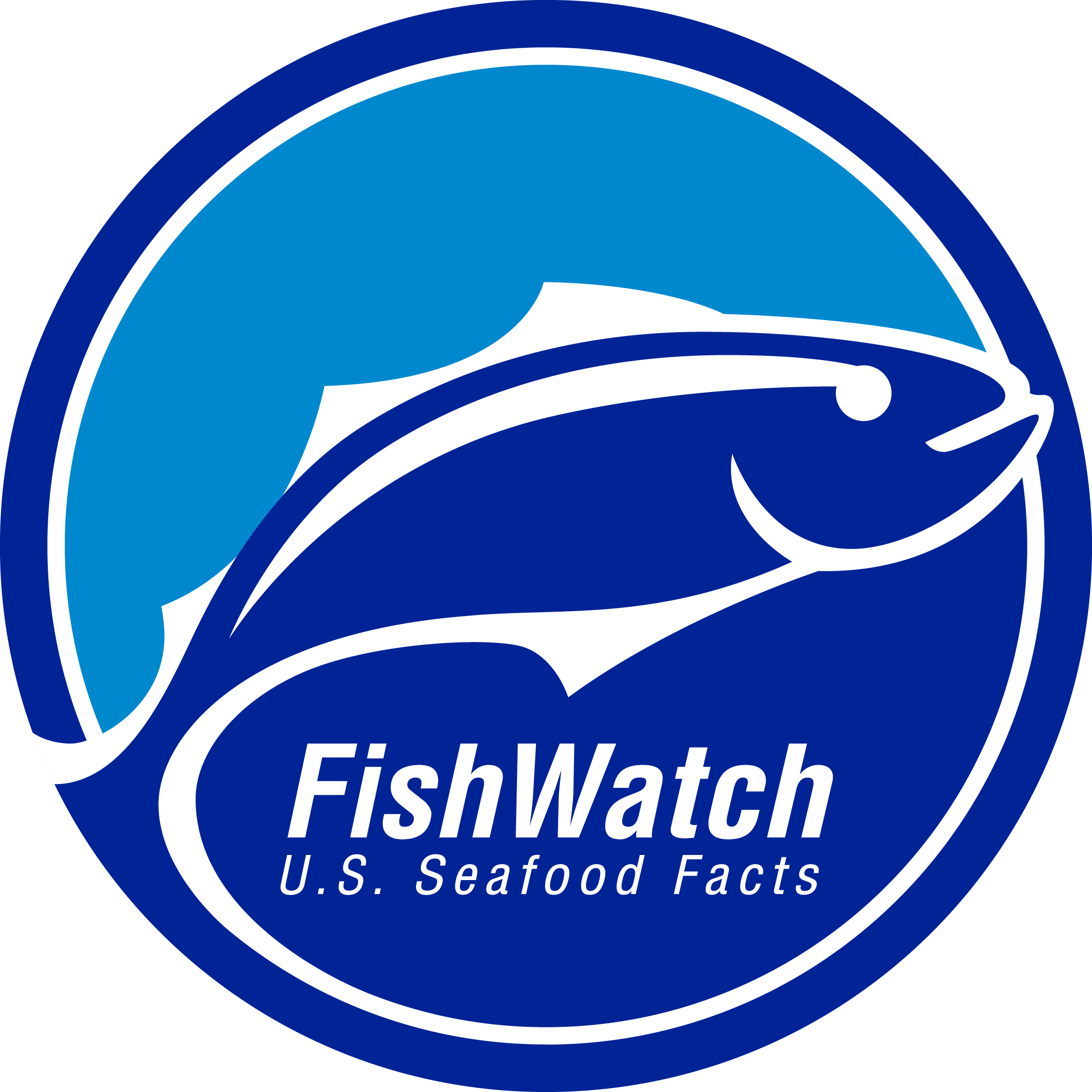
SKIPJACK TUNA (AKU)
Scientific Name: Katsuwonus pelamis
Hawaiian Name: Aku
Japanese Name: Katsuo
Skipjack tuna is commonly called aku in Hawaii. Aku are extremely important food fish in Hawaiian and Pacific Island cultures and in Japan. In Hawaii, aku is a local favorite.
Good quality aku meat is deep red in color. Smaller fish are lighter red in color. Aku has the most pronounced taste of all of Hawaii’s tunas. It is the preferred species for many ethnic dishes, especially poke (Hawaiian-style raw fish) and tataki (Japanese-style seared fish). Many consumers in Hawaii prefer sashimi prepared from large aku to that from ahi.
Fish caught in the vicinity of the Hawaiian Islands range from 4 to 30 pounds in weight. During peak season, larger fish (16 to 30 pounds) known locally as “otaru”, move into Hawaiian waters. These larger fish prized by aku lovers offer a greater yield, deeper red color and a higher fat content.
Hawaii skipjack tuna is mostly sold fresh.
FISHING METHOD
All Hawaii skipjack tuna are line-caught. Most of Hawaii’s skipjack tuna are caught by pole & line (aku boats) using live bait to attract fish and barbless hooks to catch them. This traditional style of fishing comes from Japan. The remainder of landings come from Hawaii trollers and longliners. Fresh Hawaii skipjack are not caught in purse seine nets as they are in fisheries that supply tuna canneries.
SEASONALITY
Peak season is from April through September.
PREPARATION NOTES
Texture: Firm
Flavor: Rich
Suggested Preparations: Raw (sashimi, poke), Seared (tataki), Broiled, Fried, Sautéed, Dried
The meat cooks quickly and can easily dry out if overcooked. Used in many favorite ethnic seafood dishes like grilled aku bones, aku roe and dried aku.
HEALTH & NUTRITION
Hawaii Skipjack Tuna is an excellent source of healthy, extra lean protein. It is also low in saturated fat and low in sodium. It is rich in niacin, vitamin B6, vitamin B12, iodine, phosphorus, and selenium. Hawaii Skipjack Tuna is a good source of magnesium. Hawaii Skipjack Tuna also provides about 300 mg of omega-3’s (DHA and EPA) per 4 ounce serving of fresh fish. Click here for nutritional labels and claims.
Click here to download a two-page description of this species.
SUSTAINABILITY
Current status: Hawaii skipjack tuna are being fished sustainably. Overfishing is not occurring in the Hawaii fishery or in the western and central Pacific. Population is not overfished.

Visit our Sustainability page and the Pacific Skipjack Tuna page at NOAA’s FishWatch.gov for more information.
The FishWatch™ emblem is a registered trademark of the National Oceanic and Atmospheric Administration and is used with permission.

